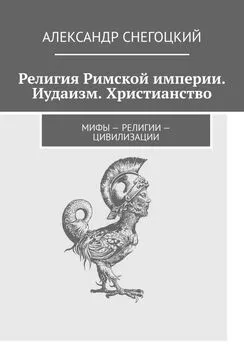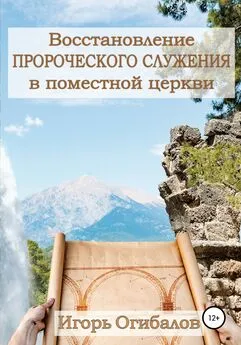Питер Хизер - Восстановление Римской империи. Реформаторы Церкви и претенденты на власть
- Название:Восстановление Римской империи. Реформаторы Церкви и претенденты на власть
- Автор:
- Жанр:
- Издательство:Литагент «Центрполиграф»a8b439f2-3900-11e0-8c7e-ec5afce481d9
- Год:2015
- Город:Москва
- ISBN:978-5-227-05821-8
- Рейтинг:
- Избранное:Добавить в избранное
-
Отзывы:
-
Ваша оценка:
Питер Хизер - Восстановление Римской империи. Реформаторы Церкви и претенденты на власть краткое содержание
В 476 г. полководец римской армии Одоакр захватил в плен и казнил отца и дядю императора – тогда ребенка – Ромула Августула и отослал императорские регалии в Константинополь. Это был смертельный удар для Западной Римской империи. Питер Хизер, профессор истории Средних веков, рассказывает о трех претендентах на престол, которые пытались возродить римское наследие в Западной Европе, – Теодорихе, Юстиниане и Карле Великом. Автор показывает, что старую Римскую империю, созданную завоеваниями, невозможно было сохранить в новой Европе в начале Средних веков. И только когда церковнослужители с варварского севера обновили институт папства, стало возможным реальное восстановление императорской власти. Этой новой Римской империи, созданной варварами, уже более тысячи лет.
Восстановление Римской империи. Реформаторы Церкви и претенденты на власть - читать онлайн бесплатно ознакомительный отрывок
Интервал:
Закладка:
Burrus, V. (1995). The Making of a Heretic: Gender, Authority, and the Priscillianist Controversy (Berkeley).
Bury, J. B. (1889). History of the Later Roman Empire (AD 395 to 800) , 2 vols (London).
Bury, J. B. (1923). History of the Later Roman Empire from the Death of Theodosius to the Death of Justinian , 2 vols (London).
Cabaniss, A. (1979). The Emperor’s Monk: Contemporary Life of Benedict of Aniane (Ilfracombe).
Cameron, A. D. E. (Alan) (1970). Claudian: Poetry and Propaganda at the Court of Honorius (Oxford).
Cameron, A. D. E. (Alan) (1973). Porphyrius the Charioteer (Oxford).
Cameron, A. D. E. (Alan) (1976). Circus Factions: Blues and Greens at Rome and Byzantium (Oxford).
Cameron, A. M. (Averil) (1985). Procopius and the Sixth Century (London).
Cameron, A. M. (Averil) and Herrin, J. (1984). Constantinople in the Early Eighth Century: The Parastaseis syntomoi chronikai: Introduction, Translation, and Commentary (Leiden).
Cameron, A. M. (Averil) et al. (eds) (2000). The Cambridge Ancient History , 2nd ed., vol. 14 (Cambridge).
Campbell, J. (1986). Essays in Anglo-Saxon History (London).
Chadwick, H. (1981). Boethius: The Consolations of Music, Logic, Theology and Philosophy (Oxford).
Chadwick, H. (1993). The Early Church , rev. ed. (London).
Charles Edwards, T. M. (1979). ‘The Distinction Between Land and Moveable Wealth in Anglo-Saxon England’, in P. H. Sawyer (ed.), English Medieval Settlement (London), 97-104.
Chazelle, C. and Cubitt, C. (2007) (eds). The Crisis of the Oikoumene: The Three Chapters and the Failed Quest for Unity in the Sixth-century Mediterranean (Turnhout).
Christie, N. (1995). The Lombards (Oxford).
Christie, N. (1996). ‘Towns and Peoples on the Middle Danube in Late Antiquity and the Early Middle Ages’, in N. Christie and S. T. Loseby (eds), Towns in Transition: Urban Evolution in Late Antiquity and the Early Middle Ages (Aldershot), 71–98.
Christie, N. (2005). ‘Charlemagne and the Renewal of Rome’, in Story (2005a), 167–182.
Clarence Smith, J. A. (1975). Medieval Law Teachers and Writers, Civilian and Canonist (Ottowa).
Claude, D. (1989). ‘Zur Begrundung familiarer Beziehungen zwischen dem Kaiser und barbarischen Herrschern’, in E. K. Chrysos and A. Schwarcz (eds), Das Reich und die Barbaren (Vienna), 25–56.
Colgrave, B. and Mynors, R. A. B. (eds and trans.) (1969). Bede’s Ecclesiastical History ofthe English People (Oxford).
Collins, R. (1990). ‘Pippin I and the Kingdom of Aquitaine’, in Godman and Collins (1990), 363–390.
Collins, R. (2004). Visigothic Spain 409–711 (Oxford).
Collins, R. (2005). ‘Charlemagne’s Imperial Coronation and the Annals of Lorsch’, in Story (2005a), 52–70.
Cormack, R. (1985). Writing in Gold: Byzantine Society and its Icons (London).
Costambeys, M. et al. (2011). The Carolingian World (Cambridge).
Courtois, C. (1955). Les Vandales et l’Afrique (Paris).
Cowdrey, H. E. J. (1970). The Cluniacs and the Gregorian Reform (Oxford).
Cowdrey, H. E. J. (2002). The Register of Pope Gregory VII 1073–1085: An English Translation (Oxford).
Cowdrey, H. E. J. (2004). ‘The Structure of the Church 1024-73’, in Luscombe and Riley-Smith (2004a), 229–267.
Croke, B. (2001). Count Marcellinus and his Chronicle (Oxford).
Croke, B. (2005). Justianian’s Constantinople’, in Maas (2005), 60–86.
Croke, B. and Crow, J. (1983). ‘Procopius and Dara’, Journal of Roman Studies 73, 143–159.
Crone, P. and Cook, M. (1977). Hagarism: The Making of the Islamic world (Cambridge).
Crone, P. (1987). Meccan Trade and the Rise of Islam (Oxford).
Cubitt, C. (1995). Anglo-Saxon Church Councils c. 650 – c. 850 (Leicester).
Curran, J. (2000). Pagan City and Christian Capital: Rome in the Fourth Century (Oxford).
Curta, F. (2001). The Making of the Slavs: History and Archaeology of the Lower Danube Region, c. 500–700 (Cambridge).
Dagron, G. (1974). Naissance d’une capitale: Constantinople et ses institutions de 330 à 451 (Paris).
Daim, F. (2003). ‘Avars and Avar Archaeology: An Introduction’, in Goetz et al. (eds) (2003), 463–570.
Davies, W. and Fouracre, P. (1986). The Settlement of Disputes in Early Medieval Europe (Cambridge).
Davis, R. (1992). The Lives of the Eighth-Century Popes (Liber Pontificalis) (Liverpool).
Davis, R. (1995). The Lives of the Ninth-Century Popes (Liber Pontificalis) (Liverpool).
Davis, R. (2000). The Book of Pontiffs (Liber Pontificalis). The ancient Biographies of the First Ninety Roman Bishops to AD 715 , 2nd ed. (Liverpool).
d’Avray, D. (2005). Medieval Marriage: Symbolism and Society (Oxford).
De Boor, C. and Wirth, P. (eds) (1992). Theophylacti Simocattae Historiae (Stuttgart).
Deferrari, R. (1952). Early Christian Biographies (Washington DC).
Deferrari, R. (1964). Orosius: Seven Books of History Against the Pagans (Washington DC).
de Jong, M. (2009). The Penitential State: Authority and Atonement in the Age of Louis the Pious, 814–840 (Cambridge).
Depreux, P. (1994). ‘Le Comte Matfrid d’Orléans’, Bibliotheque de l’Ecole des Chartres 152, 331–374.
Dessau, H. (1974). Inscriptiones Latinae Selectae , 4th ed. (Berlin).
Dewing, H. B. (1914–1940). The Works of Procopius (London).
Diggle, J. and Goodyear, F. R. D. (eds) (1970). Corippus Iohannis (Cambridge).
Dignas, B. and Winter, E. (2007). Rome and Persia in late antiquity: neighbours and rivals (Cambridge).
Dindorf, L. (ed.) (1832). Chronicon Paschale (Bonn).
Dodgeon, M. H., and Lieu, S. N. C. (1991). The Roman Eastern Frontier and the Persian Wars (AD 226–363): A Documentary History (London).
Donner, F. M. (2005). ‘The Background to Islam’, in Maas (2005), 510–534.
Dooghe, D.-G. (2002). Le Comté de Flandre et ses origines (Wattignies)
Douglas, D. C. and Greenaway, G. W. (1952). English historical documents, 1042–1189 (London).
Duchesne, L. (1886–1882). Le Liber Pontificalis, Texte, introduction et commentaire , 2 vols (Paris).
Duffy, E. (2005). Stripping of the Altars: Traditional Religion in England 1400–1580 , 2nd ed. (New Haven, Conn.).
Duffy, E. (2006). Saints and Sinners: A History of the Popes , 3rd ed. (London).
Dümmler, E. (1877). Liudprandi episcopi Cremonensis Opera omnia (Hanover).
Dümmler, E. (1884). MGH Poetae Latini Aevi Carolini , vol. 2 (Berlin).
Dunbabin, J. (2000). France in the Making 843-1180 , 2nd ed. (Oxford).
Dutton, P. (1998). Charlemagne’s Courtier: The Complete Einhard (Peterborough, Ontario).
Dutton, P. (2004). Carolingian Civilization. A Reader (Peterborough, Ontario).
Dvornik, F. (1966). Early Christian and Byzantine Political Philosophy: Origins and Background , The Dumbarton Oaks Center for Byzantine Studies (Washington DC).
Dvornik, F. (1970). Byzantine Missions Among the Slavs: Saints Constantine-Cyril and Methodius (New Brunswick, NJ).
Elton, H. (2007). ‘Cavalry in Late Roman Warfare’, in A. S. Lewin and P. Pellegrini (eds), The Late Roman Army in the Near East from Diocletian to the Arab Conquest (Oxford), 377–382.
Engelbrecht, A. (1891). Fausti Reiensis Praeter sermones pseudoeusebianos opera: accedunt Ruricii Epistulae (Milan).
Evans, J. A. S. (1984). ‘The “Nika” Rebellion and the Empress Theodora’, Byzantion 54, 380–382.
Fletcher, R. A. (1989). The Quest for El Cid (London).
Fontaine, J. (1967). ‘Conversion et Culture chez les Wisigoths d’Espagne’, Settimane di studi sull’Alto medioevo 14, 87-147.
Foss, C. (1977). ‘Archaeology and the Twenty Cities of Byzantine Asia’, American Journal of Archaeology 81, 469–486.
Foss, C. (1990). History and Archaeology of Byzantine Asia Minor (Aldershot).
Foss, C. (1996). Cities, Fortresses and Villages of Byzantine Asia Minor (Aldershot).
Foulke, W. D. (2003). History of the Lombards (Philadelphia).
Fouracre, P. (1986). ‘Placita and the Settlement of Disputes in Later Merovingian Francia’, in Davies and Fouracre (1986), 23–44.
Fouracre, P. (2000) The Age of Charles Martel (Harlow).
Fouracre, P. (2005). ‘The Long Shadow of the Merovingians’, in Story (2005a), 5-21.
Frend, W. H. C. (1972). The Rise of the Monophysite Movement: Chapters in the History of the Church in the Fifth and Sixth Centuries (Cambridge).
Frendo, J. D. (trans.) (1975). Agathias History (Berlin).
Fried, J. (2007). Donation of Constantine and Constitutum Constantini (Berlin).
Fuhrmann, H. (1973). ‘Das Reformpapsttum und die Rechtswis-senschaft’, Vorträge und Forschungen 17, 175–203.
Ganshof, F. L. (1949). La Flandre sous les premiers comtes , 3rd rev. ed. (Brussels).
Ganshof, F. L. (1971). The Carolingians and the Frankish Monarchy (London).
Ganz, D. (1989). ‘The Preconditions for Caroline Minuscule’, Viator 19, 23–44.
Geary, P. (1985). Aristocracy in Provence: The Rhone Basin at the Dawn of the Carolingian Age (Stuttgart).
George, J. (1995). Venantius Fortunatus: Personal and Political Poems (Liverpool).
Gerberding, R. (1987). The Rise of the Carolingians and the Liber Historiae Francorum (Oxford).
Gibbon, E. (1896–1900). The Decline and Fall of the Roman Empire , ed. J. B. Bury (London).
Gibson, M. T. (1975). The Continuity of Learning c. 850 – c. 1050 (Berkeley).
Gibson, M. T. (1981). Boethius: His Life, Thought and Influence (Oxford).
Gilchrist, J. (1973). Diuersorum patrum sententie siue Collectio in LXXIV titulos digesta (Vatican City).
Gilchrist, J. (1980). The Collection in Seventy-Four Titles: A Canon Law Manual of the Gregorian Reform (Toronto).
Gillet A. (ed.) (2002). On Barbarian Identity: Critical Approaches to Ethnicity in the Early Middle Ages (Turnhout).
Godman, P. (1985). Poetry of the Carolingian Renaissance (London).
Godman, P. (1987). Poets and Emperors: Frankish Politics and Carolingian Poetry (Oxford).
Godman, P. and Collins, R. (eds) (1990). Charlemagne’s Heir: New Perspectives on the Reign of Louis the Pious (Oxford).
Goetz, H.-W. et al. (eds) (2003). Regna and Gentes: The Relationship between Late Antique and Early Medieval Peoples and Kingdoms in the Transformation of the Roman World (Leiden).
Goffart, W. (1980). Barbarians and Romans AD 418–584: The Techniques of Accommodation (Princeton).
Goffart, W. (1988). The Narrators of Barbarian History (AD 550–800): Jordanes, Gregory of Tours, Bede, and Paul the Deacon (Princeton).
Goffart. W. (2006). Barbarian Tides: The Migration Age and the Later Roman Empire (Philadelphia).
Goldberg, E. J. (2006). Struggle for Empire: Kingship and Conflict under Louis the German 817–876 (Ithaca).
Gordon, D. C. (1966). The Age of Attila (Ann Arbor).
Читать дальшеИнтервал:
Закладка:
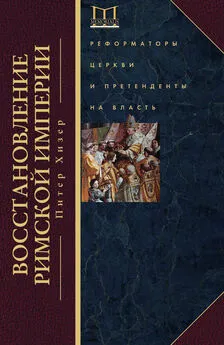

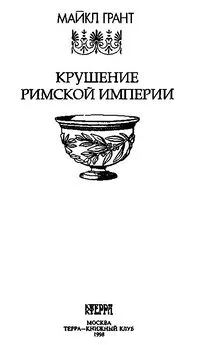
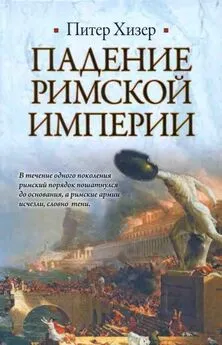
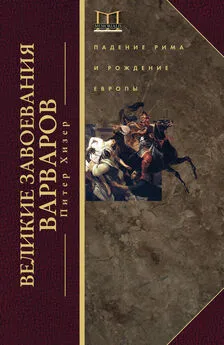
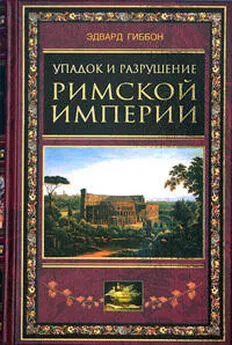
![Питер Браун - История частной жизни Том 1 [От римской империи до начала второго тысячелетия]](/books/1084366/piter-braun-istoriya-chastnoj-zhizni-tom-1-ot-rimsko.webp)


